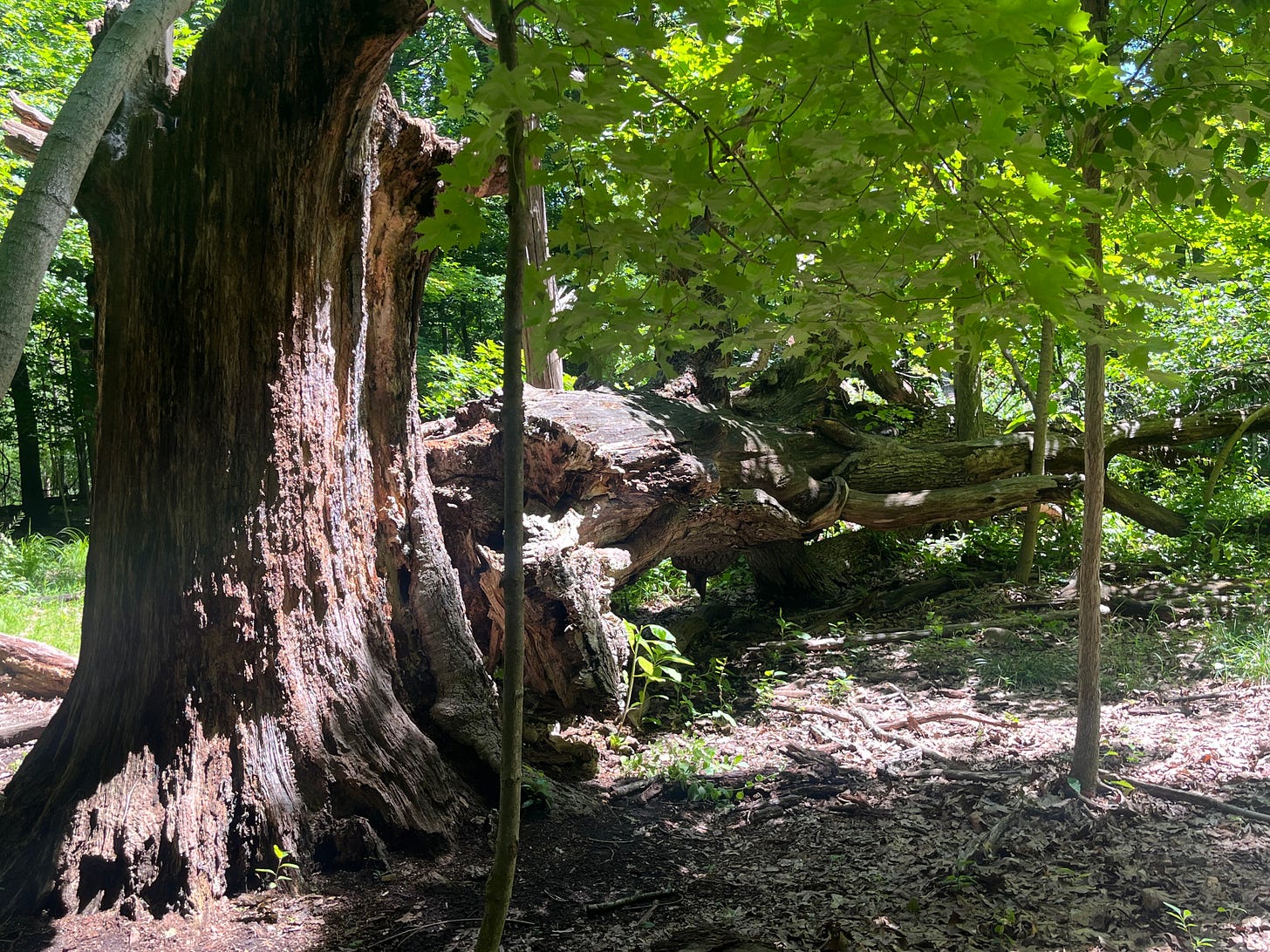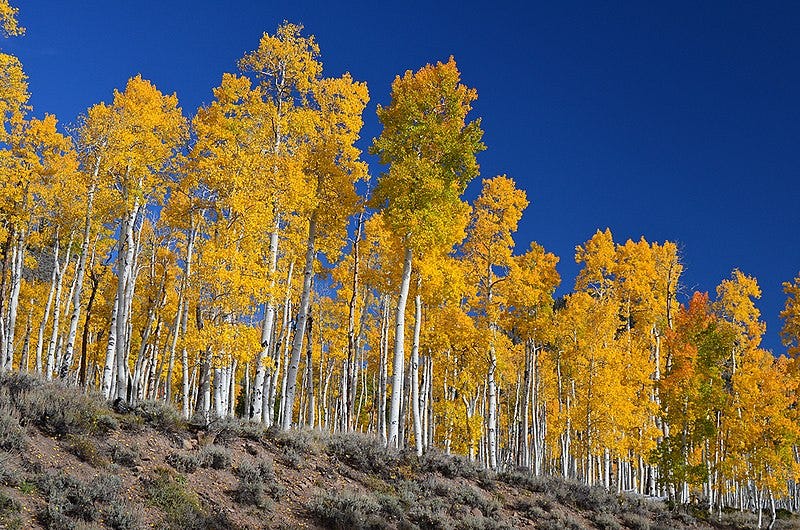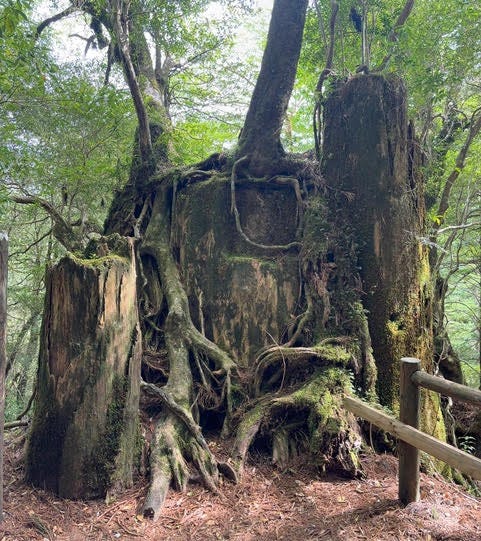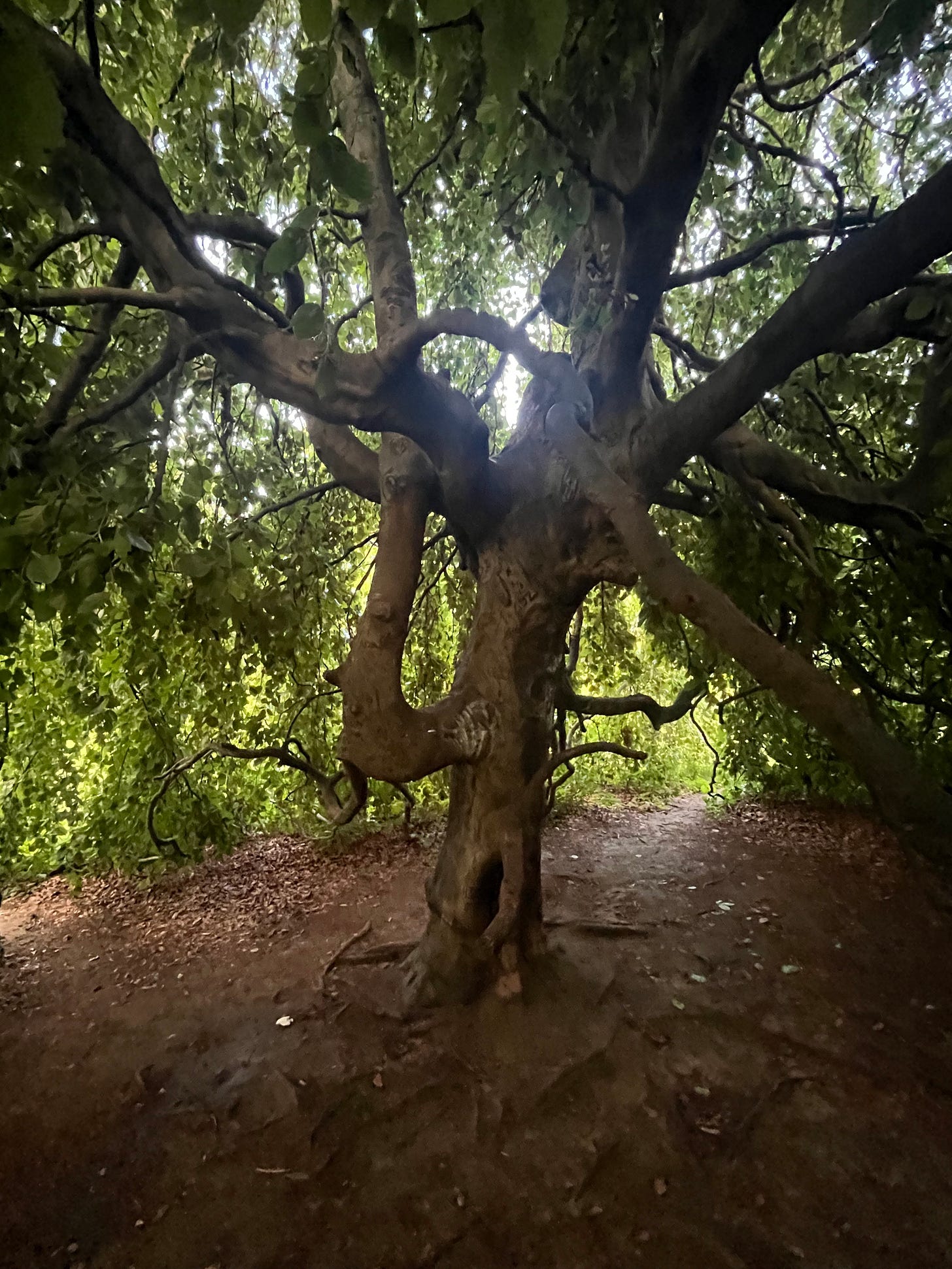The best thing about time, in my opinion, is how relative it is.
I just turned 39 and, therefore, have started referring to myself as 40. 40 is very young for an oak tree, ancient for a house cat, unheard of for a laptop computer, and very middle for a human.
Regardless of how “old” I am or appear to be, birthdays are markers of time. Breadcrumbs we leave for ourselves as life passes over us.
Since I am prone to exaggerations, I have recently been drawn to very old trees.
For instance: I went on a short Tree Field Trip to Farmington Hills, Michigan, to track down the zombie tree above just because of a map marker.
Google Maps calls this tree “The Giving Tree.” I have no idea whether it is alive or dead. If you have any guesses or insights, I’d love to hear them!
I.
One of my favorite pages on the internet is this Wikipedia list of the world’s oldest trees. It is an awe-inspiring and baffling list, filled with contradictions and oddities. The premise itself is a fool’s errand.
You see, we cannot accurately tell a tree’s age without counting its rings and killing it. Thankfully, there is a whole field of study dedicated to finding out how old any given tree is: dendrochronology.
Dendrochronologists have a few tricks up their sleeves. They drill into trees to take core samples, do carbon testing, and compare data against similar trees. This gives them a general idea of how old an individual tree is.
Really old trees tend to be brittle, broken in some parts (like my suburban zombie friend), so sometimes testing is impossible. Even after the tree dies, the rings of ancient trees are often compromised.
So, any list of old trees is just some well-informed speculation.
II.
My dear friend and fellow Gemini poet Diana Arterian recently went on a solo trip to Japan and had a much more epic Tree Field Trip. She was kind enough to share a bit from her trip with us:
Yakushima Island in Japan holds some of the country’s most ancient trees. When I traveled to Japan, I knew I needed to get there. These ancient trees begin at 1,000 feet up. About 70% of their original population was harvested 400 years ago.
The ones that remain survived because of their flaws—they weren’t straight, had knots. It’s hard not to think of this as a metaphor for life.
To see a tree named Yamato-Sugi, I hired a guide. He decided over twenty years ago to move from Tokyo to Yakushima after seeing a photo. He had answers to every question. We came upon a beautiful azalea tree and, as we marveled at it, I noticed he had goosebumps.
After many hours up natural staircases of roots, we came to a tree that stopped me in my tracks. It was stunning, clearly special. Only then did my guide tell me we had reached our destination.
At over 3,000 years old, to Yamato-Sugi my life is fleeting—the equivalent of a blink in its existence. This is what my guide said: “a blink.” He likes to hike in Alaska and see grizzlies to feel his mortality. I told him this moment, with the tree, made me feel mine.
IV.
For what it’s worth, the trees on Yakushima Island ARE on my beloved Wikipedia page.
I don’t like to conflate age with wisdom. There are plenty of bigoted elders. But I do think that something that has been around longer than most human civilizations has something to tell us as long as we are willing to stand quietly next to them and listen.
V.
The oldest trees in Michigan (as far as we know) grow out of limestone cliffs in the Upper Peninsula. They are not especially regal but inconveniently located, meaning loggers couldn’t easily get at them.
Experts think the white cedars growing awkwardly from the sides of the cliff are probably around 1,400 years old, far predating European American settlements.
VI.
My birthday wish for you is that you go forth and age as gracefully or gracelessly as you wish. Make things difficult for those who wish to exploit others. Grow as crooked as you wish. And say hello to every tree you see. Say hi from me as well.










Happy belated, Christine! Loving your tree content.
happy birthday friend ❤️